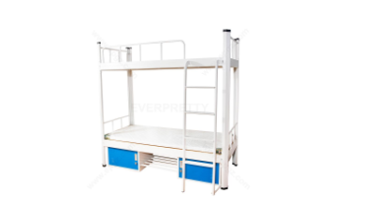45L Credit for Tax: How Does It Work?

Although it may be more expensive to build energy-efficient houses upfront, the homes are energy-efficient and provide a sustainable housing option that will pay dividends in the future. For every unit that is qualified, contractors are eligible for a $2000 tax credit. The 45L tax credit is an energy-efficient home credit that offers incentives to single-family as well as multi-family home builders. It can also be used for home renovations and upgrades
Contractors can receive a $2000 tax credit under the 45L tax credit for each housing unit that is remodeled or constructed in accordance with specific energy-saving requirements. This credit is legal for residential units that have been renovated, built, sold, or leased by December 31, 2021.
Without underground parking, projects must be at least three stories high. They must also use at least 50% less energy to heat and cool than non-energy efficient housing units. Non-energy-efficient units should be built in accordance with chapter 4 of 2006 International Conservation Code. This code specifies the minimum heating and cooling efficiency that can be used in new construction under the National Appliance Energy Conservation Act of87 by the Department of Energy.
The energy efficiency of the building envelope must equal one-fifth and be 10% better than a comparable non-efficient housing unit. The building envelope is composed of walls, windows and foundations. It acts as a thermal barrier between the outer and inner environment.
Units that are being built from scratch must be energy-efficient, including:
Double- or triple-pane windows
Reflective roofing helps to reduce heat loss
Radiant floor heating panels and radiators that use hot or steam water
Insulated exterior doors
Insulated slabs or foundations
For air conditioning, HVAC systems that have a SEER of 13 and higher
Roof insulation with 38 R-Value or higher, or R-13 to R-19 wall insulation.
Vinyl windows with low-E rating, which reflect heat, are available in a variety of colors.
Gas furnaces that have an efficiency rating of at least 80%
A 45L tax credit is available for single-family homes that are newly constructed. This is if the property is rented or sold within a short time. Because it is provided for each unit, the 45L tax incentive has the greatest impact on multi-family housing projects, such as apartments, condos, townhomes, condominiums, assisted-living facilities, student housing, and apartment buildings. Each housing unit must contain at least one room. This includes a living area, sleeping area, kitchen, and bathroom. Check out these apartments for rent in clovis ca
Who Benefits from the 45L Credit for Tax?
Qualified builders/developers, future owners, and occupants of the housing will all benefit from the 45L Tax Incentive.
Builders will be encouraged to use energy-efficient materials by the 45L tax incentive. Even though some energy-efficient materials are expensive, the tax credit along with higher equity in the construction project as well as lower energy bills and greater income will bring long-term benefits for occupants. It is possible to market certified housing units as “green living”, and attract families and individuals who are looking for affordable housing that is both environmentally-friendly and within their budget. Buyers of units will see an increase in equity, as well as budgetary and environmental benefits.
Developers and builders can transfer 45L tax credits up to 20 years.
What is the 45L Tax Incentive?
First, the contractor must be certified by an accredited and independent certifier. A rating network must be used to certify the certifier. The Residential Energy Services Network (RESNET) is one example of a rating system. The certifier will also perform on-site testing and conduct computer modeling. The certifier authenticates the package and provides all information regarding the 45L tax incentive. Fees are usually assessed on a per unit basis.
A project cannot certify a minimum or maximum number housing units. Retroactively, this credit is available for projects between 2018 and 2020 as well as until the end 2021.
The credit can be applied to the tax return for each year that the housing units were sold or leased and claimed. This is best for a 9% Low Income Credit (LIHTC), which deals in new construction or rehabilitation. This figure is for tax credits of approximately 9% of project construction costs for projects without federal subsidies.
Contractors and developers who want to take advantage of the 45L tax incentive must work together to obtain assessments and pre-qualifications. To claim credit, they should work with their tax preparer. Certification involves reviewing construction documents, consulting with project managers, builders, staff, site visits, and much more. This process can require coordination with many people and parts of a housing project. It is important to plan ahead.
Developers and contractors have the chance to create energy-efficient homes that are more marketable and more valuable. This will also protect future residents from rising energy prices. They can assist you and give you a step-by–step guide on how you can claim your tax credit.
Which types of property are eligible for a 45L tax incentive?
These properties are eligible for the 45L tax incentive
Single-family homes
Affordable housing or LIHTC
Apartment buildings
Condominiums for rent
Housing for students
Housing for assisted living
Home developments for production
Rehabilitation or substantial reconstruction
What is the Process to Claim the Tax Credit
To confirm that a property or housing unit meets efficiency requirements, it must undergo an energy use analysis. A certified RESNET rating agent will provide an Energy Model and HERS rating for the property. Finaly, your project will be certified and you will be eligible for the $2,000 tax credit.




